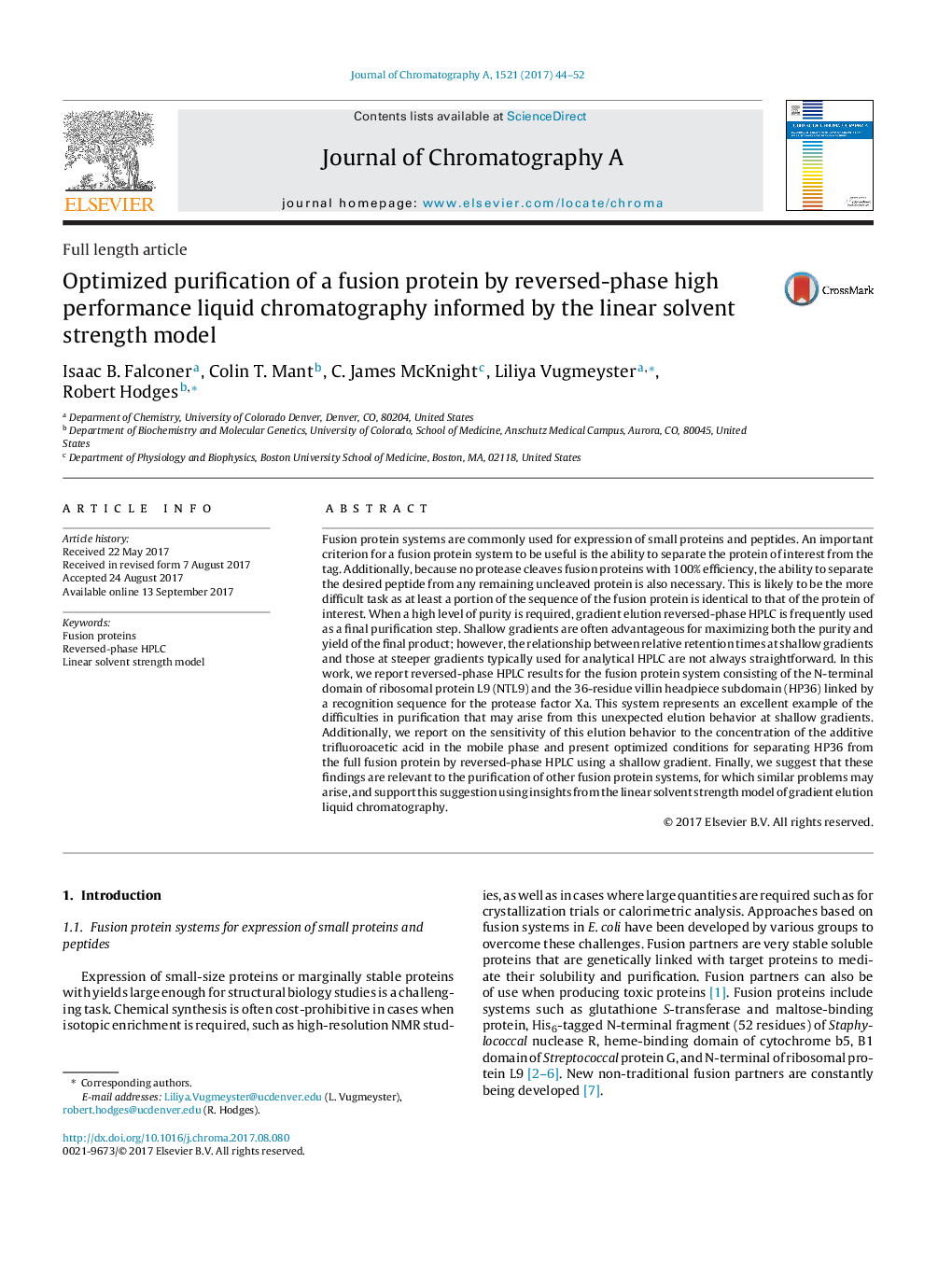| کد مقاله | کد نشریه | سال انتشار | مقاله انگلیسی | نسخه تمام متن |
|---|---|---|---|---|
| 5134831 | 1493405 | 2017 | 9 صفحه PDF | دانلود رایگان |

- Optimized conditions for separating HP36 from the full fusion protein.
- Reversed-phase HPLC using a shallow gradient.
- Unexpected elution behavior at shallow gradients.
- Elution behavior dependent on TFA concentration.
Fusion protein systems are commonly used for expression of small proteins and peptides. An important criterion for a fusion protein system to be useful is the ability to separate the protein of interest from the tag. Additionally, because no protease cleaves fusion proteins with 100% efficiency, the ability to separate the desired peptide from any remaining uncleaved protein is also necessary. This is likely to be the more difficult task as at least a portion of the sequence of the fusion protein is identical to that of the protein of interest. When a high level of purity is required, gradient elution reversed-phase HPLC is frequently used as a final purification step. Shallow gradients are often advantageous for maximizing both the purity and yield of the final product; however, the relationship between relative retention times at shallow gradients and those at steeper gradients typically used for analytical HPLC are not always straightforward. In this work, we report reversed-phase HPLC results for the fusion protein system consisting of the N-terminal domain of ribosomal protein L9 (NTL9) and the 36-residue villin headpiece subdomain (HP36) linked by a recognition sequence for the protease factor Xa. This system represents an excellent example of the difficulties in purification that may arise from this unexpected elution behavior at shallow gradients. Additionally, we report on the sensitivity of this elution behavior to the concentration of the additive trifluoroacetic acid in the mobile phase and present optimized conditions for separating HP36 from the full fusion protein by reversed-phase HPLC using a shallow gradient. Finally, we suggest that these findings are relevant to the purification of other fusion protein systems, for which similar problems may arise, and support this suggestion using insights from the linear solvent strength model of gradient elution liquid chromatography.
Journal: Journal of Chromatography A - Volume 1521, 27 October 2017, Pages 44-52